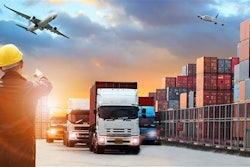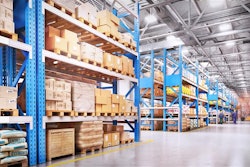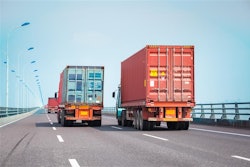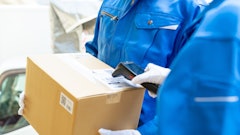
For e-commerce brands, deliveries are the culmination of a shopper’s journey. Customers browse, buy and track their orders online, but it’s this final step in their purchasing lifecycle––the one landing right on their doorstep––that can make or break their entire experience.
The pressure on brands to get this right is nothing new. Back in 2020, a PwC study found some 73% of consumers say experience influences their purchasing decisions, and one in three (32%) said they’d walk away from a brand they love after just one bad experience. What was true then is still true today: deliveries are the moment of truth in the shopper experience and a powerful driver of their loyalty.
Whether managing logistics in-house or partnering with last-mile providers, brands face growing pressure to deliver speed, reliability, and transparency. Meeting and exceeding customer expectations increasingly requires adopting innovative tools and processes––and thinking more like tech companies than traditional retailers.
Here’s exactly how e-commerce brands can rise to the challenge.
First, embrace innovation
The tech industry is synonymous with disruption. Companies don’t balk at tech and innovation; they embrace them. Logistics, however, has long been plagued by outdated processes and resistance to change. This lack of evolution does nothing to help e-commerce retailers looking to elevate the customer experience.
Fortunately, brands can take a page out of the tech playbook, not only in utilizing technology, but in applying it strategically and boldly to stay ahead of the competition. This means fostering a test-and-learn culture within their own logistics operations and in collaboration with forward-thinking last-mile delivery partners.
That said, innovation doesn’t have to be “all or nothing.” Brands can pilot emerging tools that reduce costs and minimize errors like advanced robotics for warehouse picking and sorting or automation to streamline repetitive tasks. They can also work with logistics partners that use AI-driven route optimization, adjusting in real time for traffic, weather disruptions, and historical delivery data.
Be agile and adaptable
Rigid, outdated systems are a death knell for most tech companies. Success hinges on the ability to plan for multiple scenarios, pivot instantly, and scale quickly in response to stakeholder demands. E-commerce brands stand to gain by adopting this same level of agility—and by holding their delivery partners to that standard, too.
To embrace this agility mindset like tech companies, brands should build diversified carrier networks to avoid an overreliance on a single provider should weather, labor issues or cost increases impact their service. Utilizing micro-fulfillment centers is another smart play, which moves inventory closer to end customers and opens up same- and next-day delivery options.
Another way brands can become more agile is by partnering with regional carriers that understand local markets and offer reliable service where national networks fall short. Delivery partners that have a flexible-driver network are also a critical factor, since they can be especially flexible and accommodating during peak seasons.
Squeeze the most out of your data
Data is invaluable, in tech and e-commerce. And while brands already use data to understand customer behavior and personalize the shopping experience, there's untapped opportunity surrounding logistics data.
By working together and using a combination of historical data and real-time performance and sales metrics, in-house teams and external logistics partners can pinpoint breakdowns and bottlenecks. This data-driven approach enables better demand forecasting, smarter inventory placement, and optimized delivery routes—all of which help prevent shipping delays before they happen.
When brands and their logistics partners openly share data and align on key performance indicators, they lay the foundation for faster deliveries, better customer experiences, and sustainable growth.
Finally, focus on the customer experience
Brands invest heavily in acquiring customers, pouring time, money, and resources into marketing and conversion efforts. But all of that can be undone by a single poor delivery experience. While tools like AI chatbots, virtual assistants, and personalization engines are commonly used to create a swift, seamless pre-purchase experience, e-commerce brands must bring that same level of attention and innovation after the shopper clicks “Purchase.”
Missed delivery windows, limited tracking visibility, and frustrating return processes can quickly erode trust and drive customers away. But when delivery operations run smoothly? Customers take notice. Real-time tracking, on-time arrivals, and hassle-free returns—along with the tech that powers them—are the differentiators that truly elevate the customer experience.
Final thoughts
Embracing a tech-industry mindset isn’t just a competitive edge—it’s a necessary shift for e-commerce brands looking to stand out in a crowded marketplace. The brands that thrive won’t just deliver products—they’ll deliver smarter, faster, and better by embracing innovation, staying agile, leveraging data, and prioritizing the customer experience.














![Pros To Know 2026 [color]](https://img.sdcexec.com/mindful/acbm/workspaces/default/uploads/2025/08/prostoknow-2026-color.mduFvhpgMk.png?ar=16%3A9&auto=format%2Ccompress&bg=fff&fill-color=fff&fit=fill&h=135&q=70&w=240)



